How much do you know about the historic floods of Hungary? – PHOTOS, VIDEOS

By now everyone has heard about that Hungary is the country of waters. We love our lakes, rivers and last but not least: our thermal baths. But what is beyond this love? Is this an entirely peaceful relationship?
Well, the answer is a bit difficult. Let’s say, water lets us take advantage of it for some time, but after a while it demands something in return. In what follows we will list some of the biggest floods in Hungarian history, which remind us that a coin always has another side.
Great Flood of Szeged in 1879
The great flood of Szeged in 1879 was the most dramatic tragedy the town had to suffer since the era of the Ottoman rule in the region. On March 12, 1879 the water of River Tisza suddenly covered almost the whole town leaving no time for the inhabitants to rescue their goods. The water was so strong it could get through every dikes controlling the river. Only the oldest part of Szeged managed to avoid the flood as it was located high enough. About 151 people died, 5458 houses collapsed and 60 thousand people became homeless. The huge destruction has been immortalized by some photographs, paintings and also literary works.
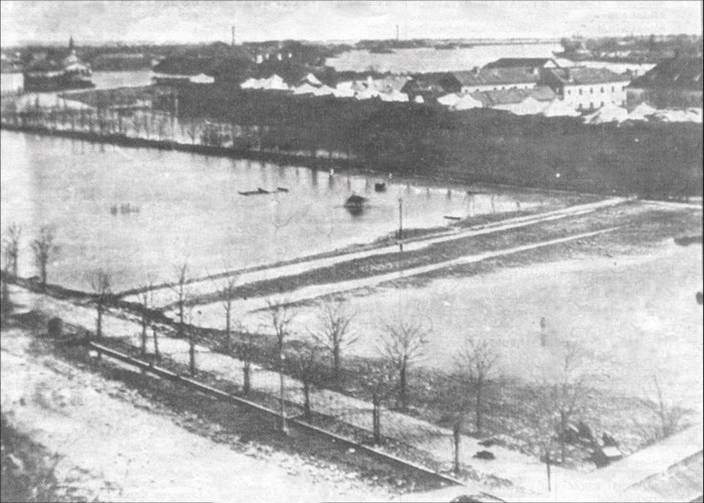
Source: Wiki Commons
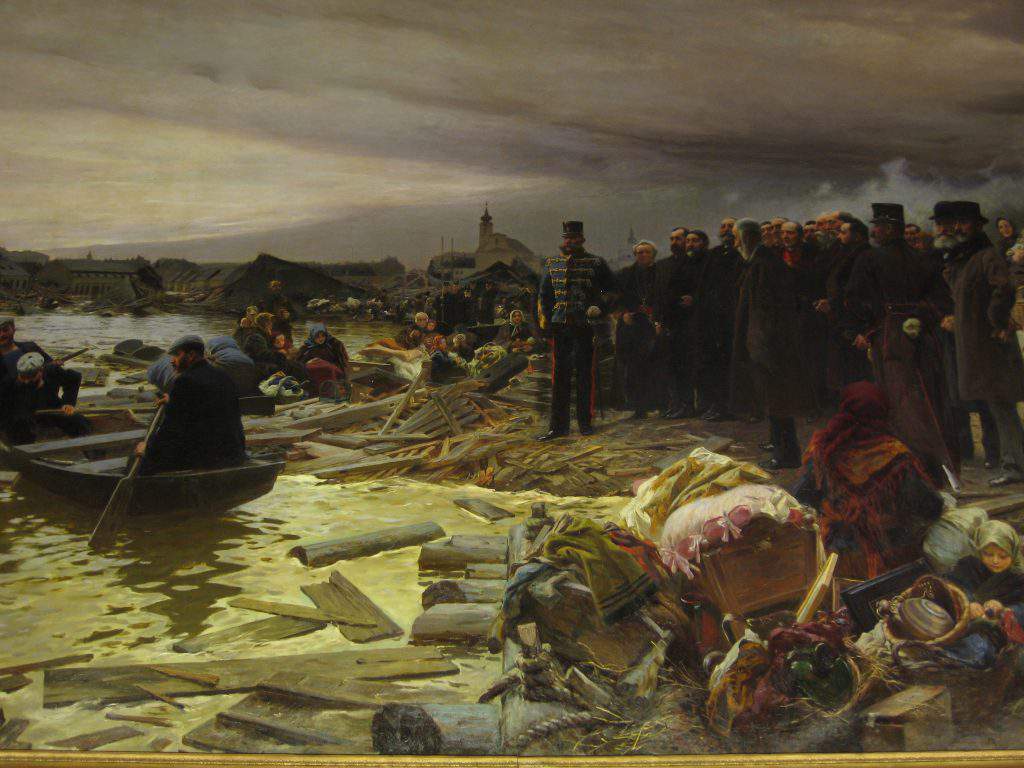
Source: Wiki Commons
Franz Joseph I of Austria went to visit Szeged already on March 17, 1879. He promised to help the town. Indeed, Austria was the country that gave the biggest support, but offerings have arrived from several parts of the world. Germany, Russia, Romania, Serbia, Turkey, China, Japan, India and France were among the countries that supported Szeged. Donations have also arrived from America and Africa contributing to the reconstruction of the town. This unprecedented collaboration is represented by the Great Flood Memorial listing the capitals of the countries that offered their help.
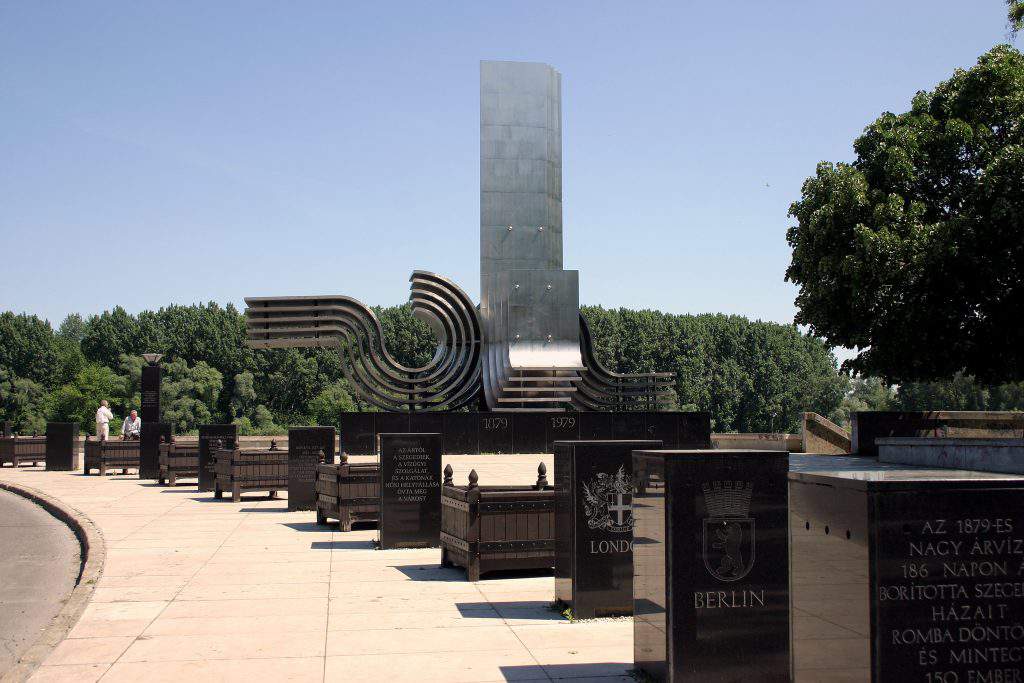
Source: Wiki Commons
The following video contains some records of the flood.
Icy flood of 1956
As napitortenelmiforras.blog.hu reports, the year 1956 did not lack disasters in Hungary. Although it immediately recalls the memories of the Revolution and the War of Independence in Hungary, a serious earthquake and a huge flood also happened in the very same year. Between January and March 1956, the weather showed some rapid changes and this led to the so-called icy flood of the Danube. The dikes were in very poor condition, thus, they could not stop the icy water. However, civilians, soldiers, police officers and members of the Soviet army (staying in Hungary temporarily) did their best to reduce the amount of destruction. Due to the flood, thousands of people became homeless, but the neighbouring towns and villages offered to house them in every case.
The flood caused the biggest destruction in Baja and Mohács, but other places were damaged, too. For example, the photo above shows that the water could move the massive flood-gate of Tass, made of concrete, easily.

Source: Wiki Commons
This was the first flood in Hungary that was recorded by a movie available for the public. The movie shows the strength of the icy flood, the risky job of the sappers bombing the ice near Kossuth Bridge and the huge efforts of everyone working to stop the flood.
Recent flood of 2013
Hungary was not the only country affected by the recent flood of 2013, as all Central Europe was threatened by it. The Hungarian Government declared a state of emergency already on June 4, and the flood of the Danube arrived soon afterwards. The water level was finally culminated on June 9, when it was above the general level by 891 cm, which broke the record of the flood of 2006. This difference can be seen by comparing the two photos of the same location in 2006 and 2013.
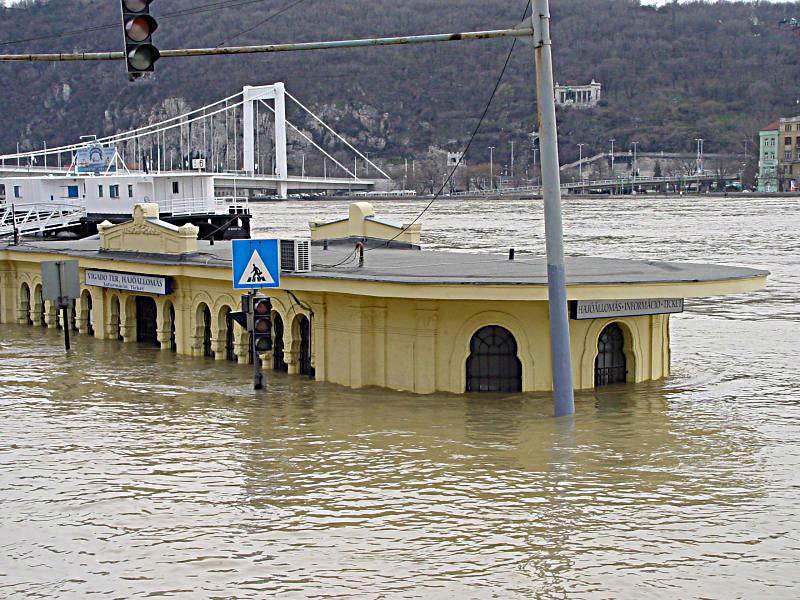
Source: Wiki Commons
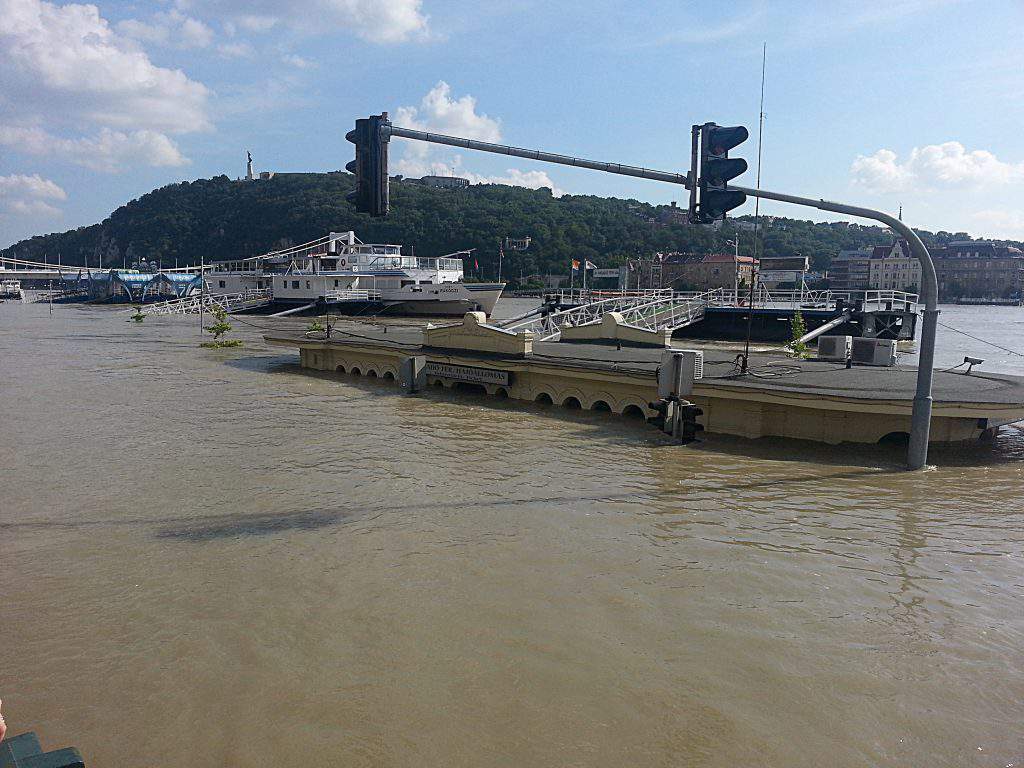
Source: Wiki Commons
The destruction was not as huge as that of the other two floods mentioned above. This is mainly thanks to the successful prevention and the huge efforts of the volunteers fighting the river. In terms of numbers, around 206,000 people were directly threatened by the flood and 1570 people had to leave their home. As the Danube did not raise as suddenly as, for example, in 1956, locals could safely observe the power of nature.
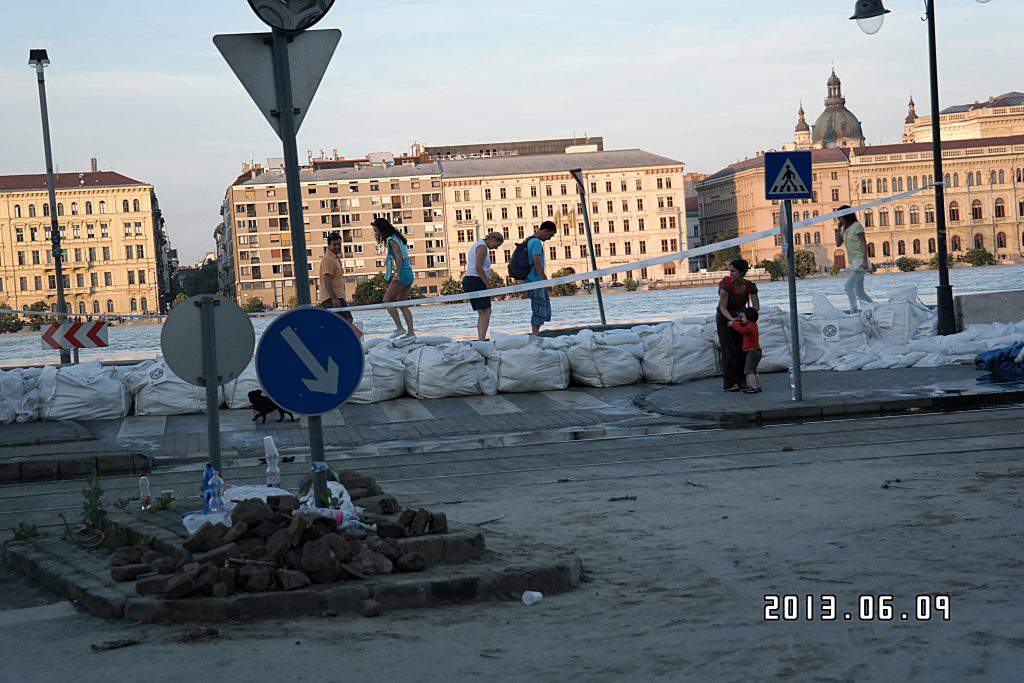
Source: Wiki Commons

Source: Wiki Commons
Due to the technological developments, videos of better quality could record the flood.
Sudden rainfalls of 2017
Of course, the sudden rainfalls of this year have nothing to do with either the Danube or River Tisza. They were not floods in the original term of the word, but they have caused similar circumstances. Due to these sudden rainfalls, water appeared on the streets of several Hungarian towns, and its level raised high in no time. One of these cases can be seen in the video below shot on May 23 in Budapest.
https://www.facebook.com/karoly.sinka.5/videos/1452501198142733/
Source: napitortenelmiforras.blog.hu





